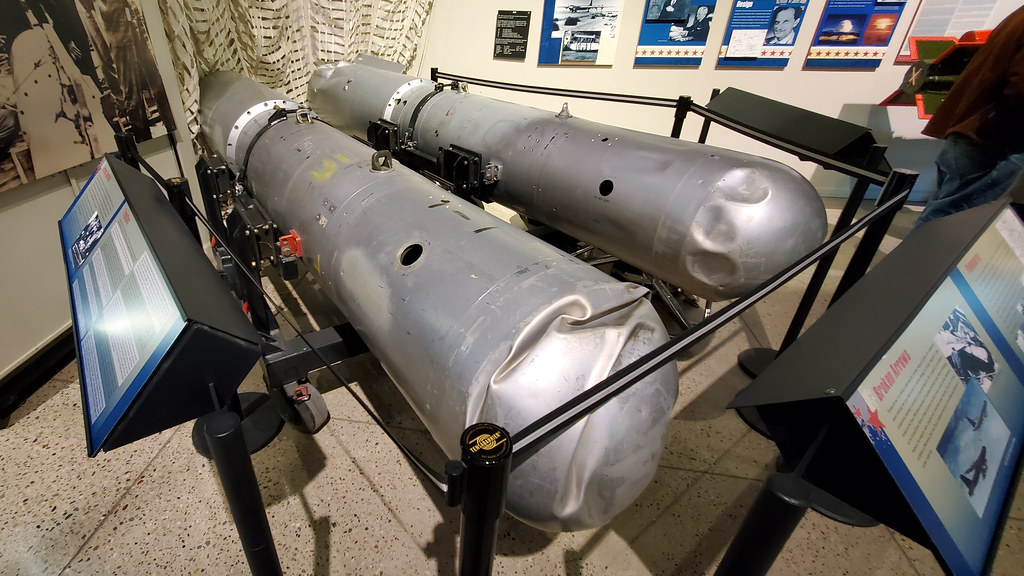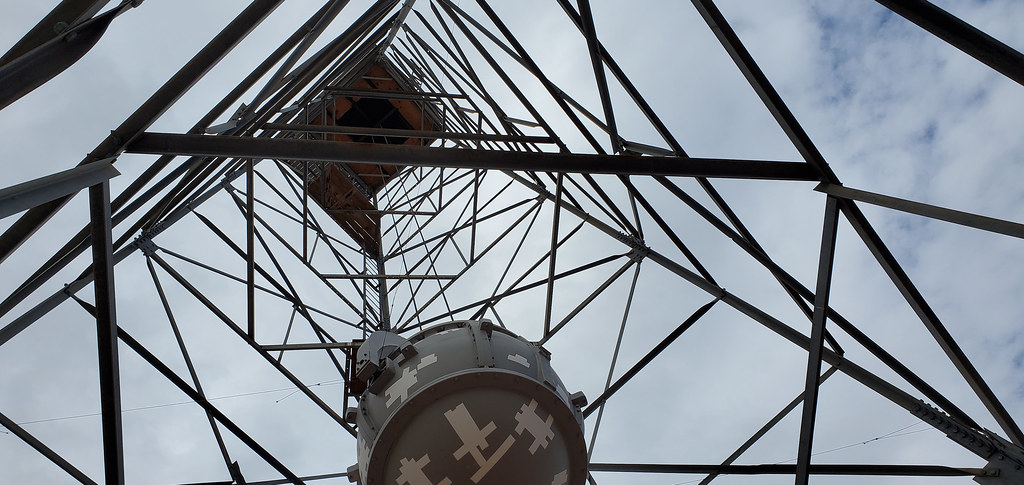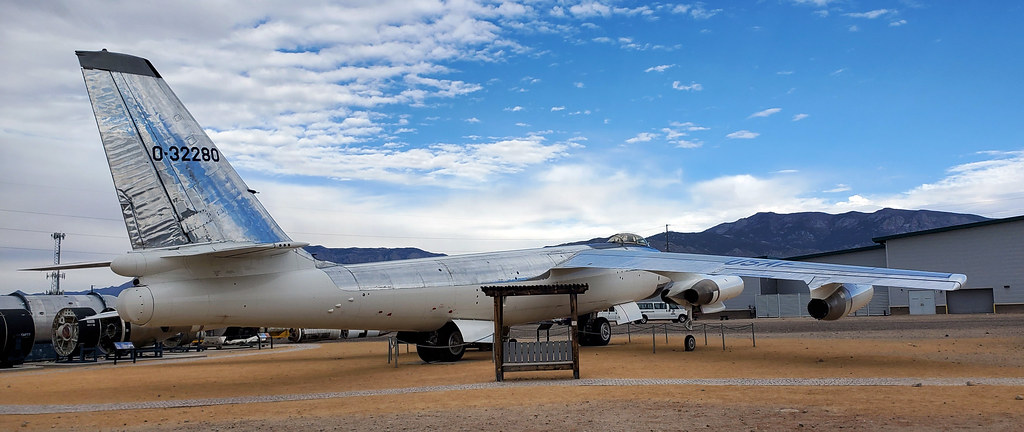For my first tourist activity of Albuquerque, I decided to visit the National Museum of Nuclear Science and History. The museum officially lies in an unincorporated area of Bernalillo County, but still holds an Albuquerque address.
A bulk of this museum was fairly traditional, with a mixture of some interactive exhibits, objects on display, and plaques with text. The museum opened with an area called the “Pioneers of the Atom,” which introduced notable figures who paved the way to discoveries and advancements of the atom.
Next up was a section about World War II. It started with an overview of the countries involved in the war, as well as the creation and use of the atomic bomb. It then dove deeper into things like the Manhattan Project and the assembly of the atomic bomb, and provided video footage of interviews conducted directly with some of the scientists and soldiers involved with the atomic bomb during the war.
There was a section off to the side of the World War II section that was dedicated to the temporary exhibit of the season. When I went, it was an exhibit showcasing the cruelties committed towards the Japanese during World War II, and how the United States reacted very harshly and aggressively towards the Japanese in response to their attacks. Similarly to how I got a lot of the timeline of the civil rights movement mixed up, this section made me feel particularly ignorant when I learned that this forced relocation of the Japanese-Americans happened as recently as the mid-1900s.
The next section focused on Hiroshima and Nagasaki. First it showed the bomb casings of the atomic bombs dropped on the Japanese cities, then it explained the Japanese post-war recovery process, and how the atomic bombs affected the Japanese for a very long time.
Next up on the timeline was the Cold War. Again, not having been much of a history enthusiast throughout my youth, a lot of this information was pretty new to me.
The most amusing piece of information I saw was about the concept of “MAD,” which stands for Mutually-Assured Destruction. This doctrine states that, if one side attacks the other with a nuclear weapon, they functionally guarantee the destruction of both parties, because the defending party will retaliate with equal or greater force. Thus, it is in everyone’s best interest for all parties to have extremely powerful nuclear weapons, because then, nobody will attack each other in fear of getting destroyed themselves.
At this point in the museum, there was a door leading outside to Heritage Park, which held a lot of planes, rockets, missiles, and other military equipment.
Looping back inside, the exhibits started getting closer to modern day, with nuclear medicine and radiation being the next sections. I took a little interactive quiz about radiation exposure, and apparently, my exposure is very average. Right beside it was a look back at atomic pop culture and the dawning of the Atomic Age.
The end of the museum had what looked like sponsored exhibits, and covered things like nuclear waste transportation, green energy alternatives, and the uranium cycle.
The exhibits were interesting and the military planes and equipment were nice to look at, but I think the most memorable takeaway from this museum is the overview of the historical events.
This is a continuation of something I’ve been realizing lately while going to a lot of museums during my road trip, and something I’ve been regularly mentioning in my blog—the American education system is absolutely horrible at teaching history, and somehow finds a way to make it seem as boring as possible. Now that I’m actually learning about it in a compelling way, all of these events feel much more consequential and relevant, so I’m much more interested and invested in knowing the logic behind why things happened the way they did, and how things ultimately ended up playing out.













